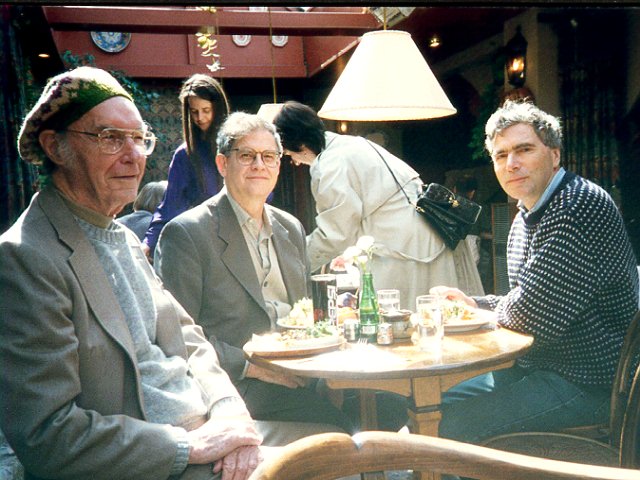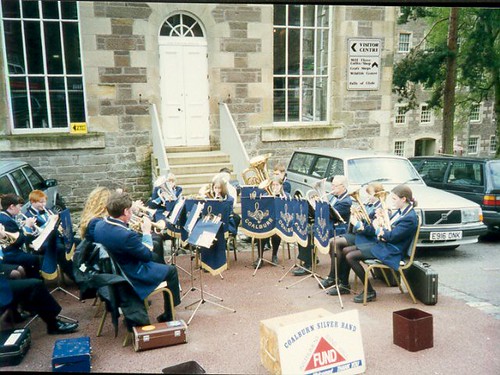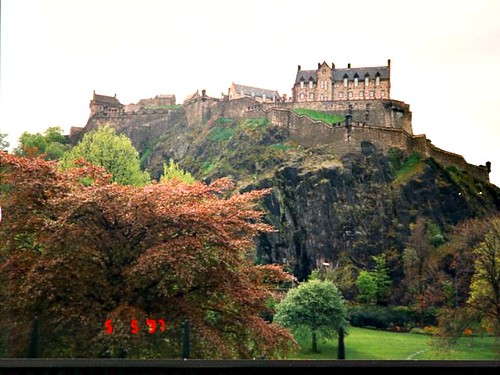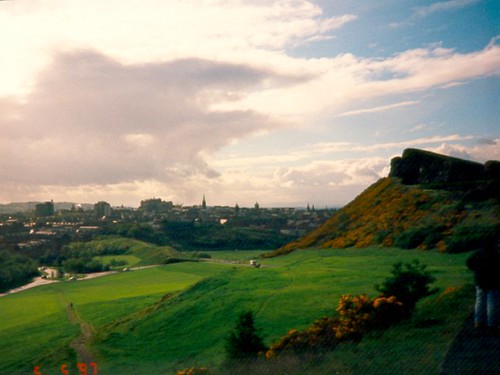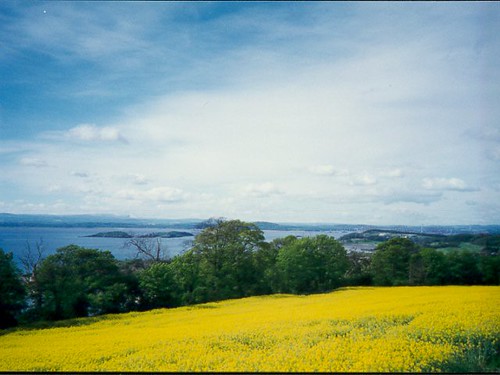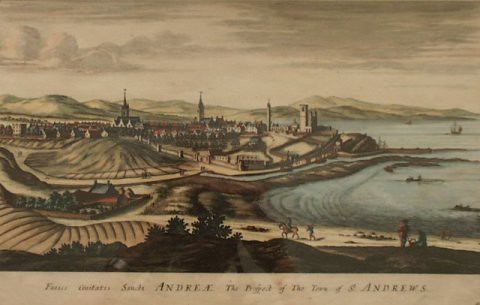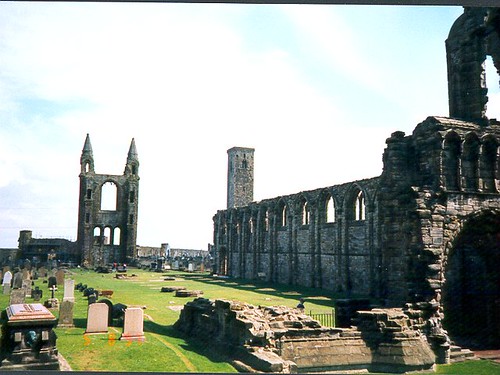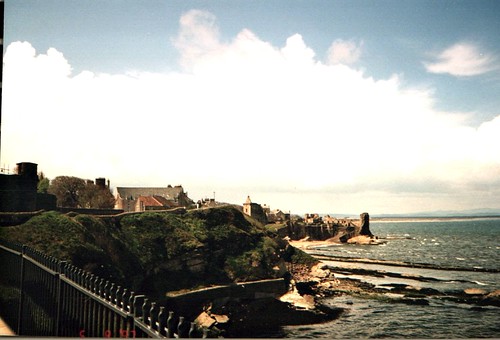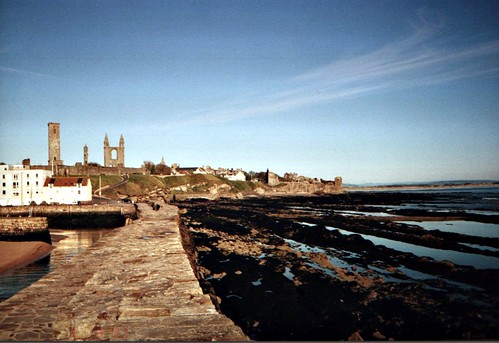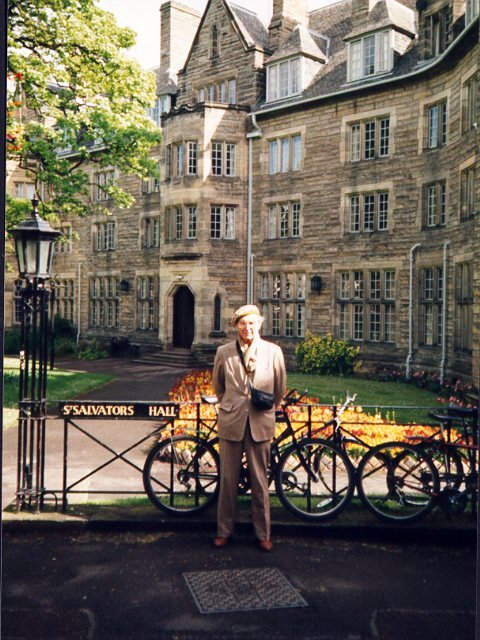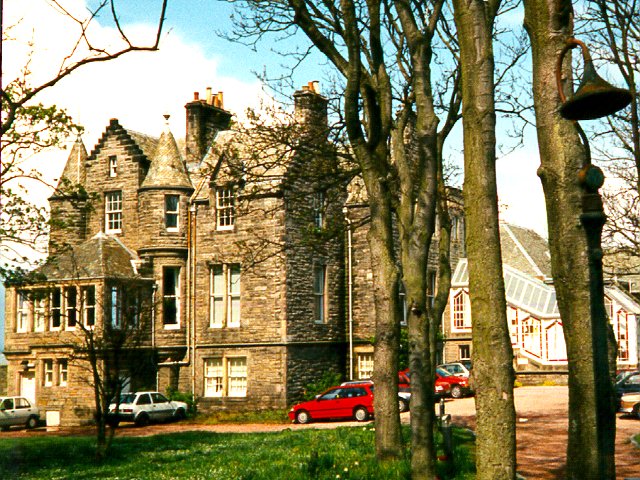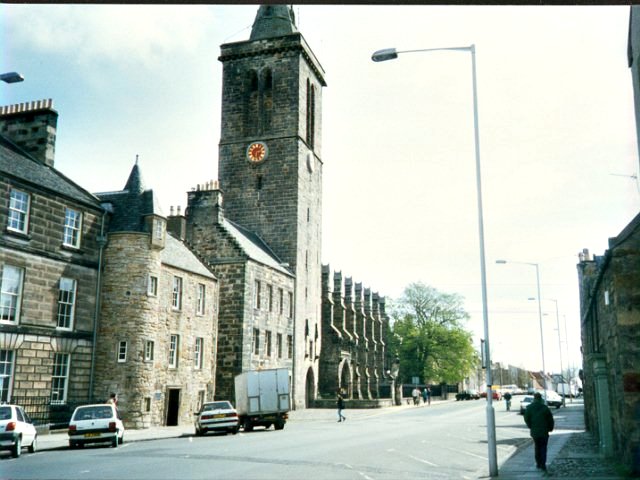Gerard M. Foley
Travel & Photography Collection
Scotland
Just after my sixteenth birthday I sailed in the Cunard-Anchor Liner California from New York for Boston, Belfast and Glasgow. I was to matriculate at the University of St. Andrews as a bejant (freshman) to study chemistry and physics (which I discovered was known as Natural Philosophy). After two years in history at an American university I returned to St. Andrews and graduated there in 1938. I have since gone back to Scotland several times as a tourist, but in 1997 my son asked me to accompany him there, when he was invited by a colleague, Professor John Broome, to deliver a paper to the Economics Department at St. Andrews.
New Lanark
After our New York-Glasgow flight and a night's rest, Duncan and I drove to New Lanark. Here Robert Owen, the Welsh born woolen mill operator, first put into practice the ideas for the improvement of the lives of working people which he later tried to introduce into America in New Harmony, Indiana. New Lanark is on the upper reaches of the river Clyde.
East of Edinburgh are a number of high hills, the most prominent of which is Arthur's Seat, from which we saw this panorama of the city.
North of Edinburgh, on the other side of the Firth of Forth, lies the "Kingdom of Fife", officially Fifeshire. Here is a view of the Forth from Fife.
The city, like almost all other medieval cities, once had a wall surrounding it. Much of it is gone now, but this elegant gate to the south remains.
The cathedral was built in the 13th century. In the 17th or 18th century the town needed money badly, so the council sold the lead covering the roof. When the building fell in, it provided a copious supply of stone for building around the town. Many walls and house walls show carved stones to this day.
The square tower in the center of the picture is St Rules or St. Regulus tower, built as a church tower about a century earlier the cathedral.
Seaward of the Cathedral was the castle.
The archbishop lived here until protestants stormed it and "defenestrated" the last archbishop, Cardinal Beaton. An English army and a French fleet, switching their usual roles and enmities, besieged and recaptured it. The French got John Knox, who served in their galleys for a long time before escaping to return to Scotland.
Below the castle and cathedral are the harbor and pier.
Students who attend chapel, and those who care to join them, walk out in their scarlet flannel gowns along the lower level of the pier, to the left in the picture. In my day the men walked back along the higher part of the pier. There was a tradition that when women were admitted to the University in 1889 (St. Andrews was the first in Scotland to admit them), the men tossed their trenchards (to Americans, mortar-boards) into the sea. Recently the Alumni Journal denounced this tale as a myth. It still makes sense to me, because in the 1930's the women (who slightly outnumbered the men) wore trenchards, but the men didn't. The bejantines (first year women) wore yellow tassels, the semis red and the seniors black, if I remember correctly.
The University
Away from the cathedral grounds, not far along North Street and nearly hidden behind the Younger Hall, is a Men's Residence, St. Salvator's Hall, where I lived during my three years at the University.
The windows of my room during my last two years are hidden by the foliage at the left, just above and to the right of the lamp.
Across the Scores (the street closest to the sea, which if you must, leads to the Royal & Ancient Golf Club), behind Sallies is the Department of Economics.
This is one of the buildings which were private houses when I was one of only seven hundred fifty or so students. Now there are several thousand, but the University is still the smallest in Scotland. It is here that Duncan addressed his fellow economists on work based on information which has only recently become available through the United Nations.
If you return to North Street and continue away from the cathedral you come to the old quadrangle of the United College. An entrance to the quad is through the arch in the base of the Chapel Tower.
In the cobblestones between the Chapel and the street is an X, marking the spot where Andrew Hamilton and other Hussite heretics were burned before the Reformation. It used to be the custom to avoid stepping on the stones that made up the cross. To the left, beside the lane called Butts Wynd, is the Admirable Crichton's house. Crichton graduated from the University at some very early age, and became Admirable for winning a debate at the University of Paris. He apparently was not as admirable a swordsman as a debater, for he lost a duel in Italy before he was thirty. In my day this house was the Student Union, and is now a dining hall.
